Kefalonia Attractions
Sightseeing
Argostoli
You can visit some of the most popular destinations in our country, such as Argostoli, which is the largest city and capital of the island. It is built amphitheatrically overlooking the beautiful bay that surrounds it. You can have your coffee on the stone-paved pedestrian street with dozens of cafes and bars or take a swim in the beautiful sandy beaches of Makry and Platys Gialos. In the city of Argostoli, you will find numerous hotels and rooms to let as well as restaurants for every taste.
The capital of the island since 1757, well hidden on the inner coast of its peninsula, built as a safe haven and out of sight of invaders. The town itself was destroyed in the earthquakes of 1953. The destruction caused the loss of many of the island’s treasures along with its distinctive Venetian architecture. The town was immediately rebuilt with the help of the Greek and foreign governments and the hard work of the islanders. Since then it has developed into a modern European style city that still maintains a new kind of charm.
It offers shopping opportunities along its pedestrian precinct Lithostroto, notably the islands specialty, hand made solid gold and silver jewelry. Designs range from modern to classical and of course the favorite animal and sea creatures. An array of side streets with shops offering leather goods, local ceramics, linen, and crochet work including the inexpensive characteristic Greek rag rugs called ‘kourelia’ in varying colors and designs. Entertainment is situated mainly around the main Valliano Square and a host of cafes, bars, hotels, and restaurants surround you in all directions, giving an excellent choice. It is a very lively town especially during the summer months when most tourists and expatriates visit. Its port is bustling with excursion boats, yachts and cabin cruisers moored against its quayside. Palm trees line the way between the coastal road and the jetty where you find the local fishermen selling their fresh catch. With a rainbow of colors in the fruit and vegetable market, especially on a Saturday morning when the locals bring their freshly picked produce and homemade wines to sell, – their stalls and vans are at the end closest to the bridge.
“Indigo, the deep blue contains an abundance of sapphires shining their light through the density, awakening and stirring our consciousness. In the daylight the sea will change, but for now it remains mysterious, obtainable through our imagination.” ― Jennifer Lynch
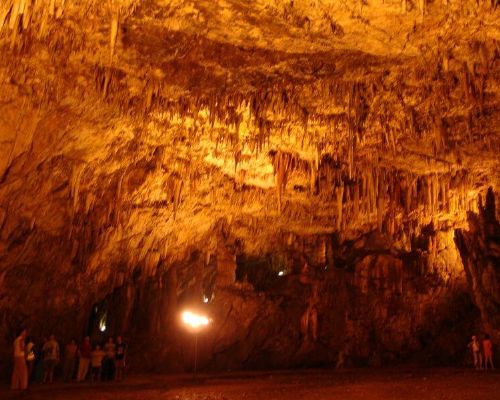
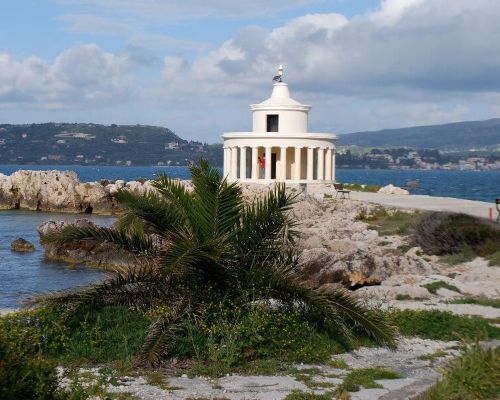
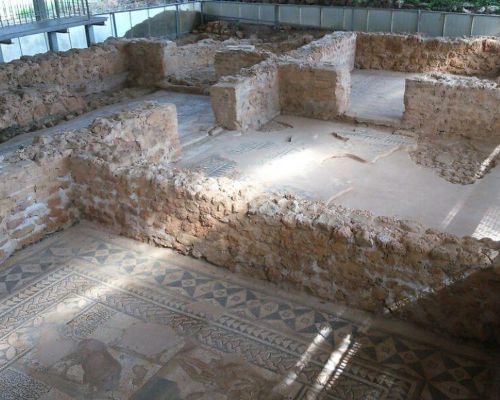
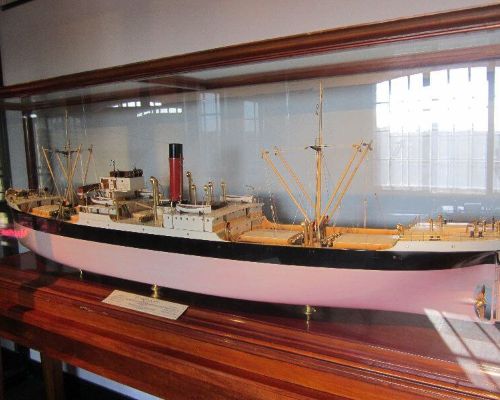
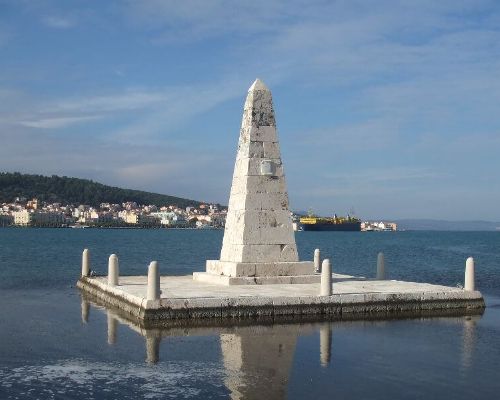
Assos
One of the best natural beauty spots on the island, a spectacular view appears before you in the form of a peninsula and the enchanting hamlet of Assos. The restored architecture of the finest quality and style surrounded by older houses, amid the ruins of an age gone by. The swell of the harbor protects the elegance of the tiny square named ‘Paris’ and dedicated to the French who helped with funds to rebuild after 1953. To the right of the peninsula are two small sandy coves with more stretching along the coast to the left and all are only accessible by boat.
Around the pine-clad peninsula are many caves where, if you’re lucky you will see the famous Monk Seals. Once the capital of the northern region, the old fortress was the seat of the island’s two Venetian governors, the remnants include an arched gateway built in the 16th century to protect the inhabitants from pirate raids, only part of the skillfully constructed walls remain standing, with one of the many chapels that once stood proud lying in rubble next to it. The church of Saint Mark stands in a slightly healthier position still with its entrance archway. The old barracks once used as a rural prison and the guard boxes used during the war years still remain. Well worth exploring by foot giving you an enjoyable challenge.
Archaeological sights
Mycenaean tomb
Outside the village, on the way to Poros, at a place called Bourtzi, was discovered an important Arched Mycenaean tomb of a noble dignitary (13th-century BC) of 6,8 m diameter. It’s the best-conservated tomb that’s found on the island so far, with important findings that show the blush of the Mycenaean civilization in the area.
Cyclopean walls
Close to Koutavos are the ruins of the walls of the ancient town Crani (7th and 6th-century BC), the renowned Cyclopean walls, which had about 4 km of the perimeter. It’s a gigantic work of fortification, sculptured in rock. In the same area, we also find the ruins of several buildings as well as a temple dedicated to Dimitra.
De Bosset Bridge
The bridge is actually the Jewell of Argostoli and it continues being fully operative as it connects the town with the other side of the lagoon, to the road that drives to the northern part of Cephalonia. It is called so because it was designed by the Swiss military De Bosset and it was accomplished in 1812. In the beginning, it was of wood but within the following years was rebuilt of stone with successive arches, which is the form that has up to today. In the middle of the bridge overmasters an obelisk, constructed in honor of those who built the bridge.
Cyclopean walls
Close to Koutavos are the ruins of the walls of the ancient town Crani (7th and 6th-century BC), the renowned Cyclopean walls, which had about 4 km of the perimeter. It’s a gigantic work of fortification, sculptured in rock. In the same area, we also find the ruins of several buildings as well as a temple dedicated to Dimitra.
Mycenaean tomb
Outside the village, on the way to Poros, at a place called Bourtzi, was discovered an important Arched Mycenaean tomb of a noble dignitary (13th-century BC) of 6,8 m diameter. It’s the best-conservated tomb that’s found on the island so far, with important findings that show the blush of the Mycenaean civilization in the area.
Kefalonia Museums
Archaeological Museum of Argostoli
Lots to see on display with exhibits from the Paleolithic and Mycenaean periods with fine examples of ceramic ware, coins, gold, jewelry and burial gifts from sites all over the island, together with relics from the period of the Trojan War, Byzantine, Hellenistic and Roman periods. Open 8 am to 3 pm, closed Mondays and public holidays.
At the archeological museum of Argostoli, which was built in 1857, are kept the treasures which were found at the excavations around the island. In the three halls of the museum are exhibited findings from the Mythical period up to the Roman age. In the first hall, we find firestone instruments from the Paleolithic age, various objects from the Neolithic age, representable crockery from the Mediogreek period, precious miniature art and ceramics. In the second hall are exhibited findings from the Mycenaean period, which is the most interesting for Kefalonia. Golden Coins. Coppery swords, vessels, jewelry, chops, and an Egyptian scarab are some of the exhibits. Finally, in the last hall are exhibited the findings of the Kefalonia Tetrapolis (5th-century BC), which was consisted of the four towns-states Pali, Krani. Sami and Pronni. There we find an urn, a marble head of Silinos and a vessel that has the form of the head of a slave.
Thrapano Bridge
Built originally in wood from plans to completion in 15 days during 1812, with the monument completed in 1813 by the British officer de Bosset. The bridge crosses the gulf from Argostoli to Thrapano on the other side of the Koutavos lagoon. Rebuilt years later in stone with arches high enough to pass a small rowing boat through which have subsided since the earthquakes.
Ancient Krani
This amazing and enigmatic sight leaves most in a ponder. Walls made of enormous masonry blocks stretching for miles. Built during the 7th-6th century BC. Trees and scrubs now surround and grow among these huge stone slabs, which must have taken countless men and stonemasons to cut and move into place. These structures are called Cyclopean walls and were built in Greece since primeval times.
These vast blocks of rocks are placed one on top of the other without mortar and it is the sheer weight, building technique, and design that keep these giants in place. This is the ruins of the main and doubtless largest of the four ancient cities on Kefalonia. The city stood on a hill at the upper end of the Gulf of Argostoli, today known as the Koutavos Lagoon. These immense stones formed an extensive wall around the city’s perimeter, still traceable and over 3 km in circumference. On the northeast side of the hill, the walls follow the steep ascent to the summit. Here the remains show that this part was built with better uniformity and displays the remains of a gateway, several towers, and seemingly well-hidden entrance gates.
Skala
At the southernmost end of the island, you will see the seaside settlement of Skala with its vast and busy beach with the water sports infrastructure. There you will find a beach bar, umbrellas and sun loungers. Other destinations on the island of Kefalonia are Poros, Svoronata, picturesque Fiskardo, home of poet Nikos Kavvadias and others.
Famed for its Roman Villa dating to the 3rd century BC although in ruins it has well preserved mosaic floors, set on the outskirts of this modern resort that has a mixed sand, shingle and pebble beach stretching in both directions off the main coastal road, in front of the charmingly laid out village. The ‘old village’ of Skala, destroyed during the 1953 earthquakes, is set behind the new village, originally built on the hillside as protection against invading forces and pirates. Excellent views of the sea, and surrounding cultivated area, a most agreeable walk to see the village’s older style architecture, remnants of the old wash house and spring, bell tower, graveyard, and olive press. On the coastal route towards Poros, you will find the foundations of an ancient temple dedicated to Apollo, dating back to the 7th century, and the small church of Saint George rebuilt from the pre-classical building.
Poros
Two routes bring you to the lovely town of Poros, one along the coast from Skala passing some well-hidden coves and spectacular rock formations in the sea. The other through a luscious green valley steeped in history. From the ancient vaulted ‘tholos tomb’ discovered in Tzanata, unearthing evidence of great importance in the unending search for Odysseus’ kingdom. The ancient ruined acropolis of Proni.
The newly excavated cave of ‘Drakena’ giving more Neolithic findings which were discovered in this intriguing cave set high above the gorge with a tentative and precarious climb to its entrance. The mountain top retreat and Monastery of Theotokos Atros, the oldest on the island, with the most marvelous views. Two bays, both with attractive backdrops of green verdant slopes separated by the dry Vohinas river bed in the summer, which turns into a torrent during the winter and spring months, gushing with water from the mountains and springs of Lake Avythos. Poros is one of the major ports on the island and ferryboats leave daily for Killini on the mainland.
Katavothres
This is a most peculiar sightseeing spot for anyone that doesn’t understand its implication. On the northern end of the Lassi, the peninsula is several fissures where the seawater used to flow with great force into a shallow recess a few meters inland. The water feeds four small pools, and then disappears through two mysterious chasms at the edge of the ponds and reappears two weeks later on the other side of the island.
It travels through subterranean tunnels forming a rare geological phenomenon as it reappears in a series of brackish eruptions on the coastline at Sami. Two water mills have been used to harness the power of the steady flow of the water. Before the war years, the flow drove an ice factory as well as powering an electricity plant. The earthquake of 1953 reduced the volume of water sinking at these installations to such an extent that they became uneconomic to operate.
Ayii Theodori Lighthouse
Another construction by the British in the 1800s. Governor Sir Charles Napier decided to solve this problem by constructing corresponding lighthouses. The first Saint Theodoros was built on a rocky outcrop on the Lassi peninsula and was surrounded by a circle of Doric columns, the other was on the eastern point of the small island of Vardiani. Both were destroyed in the earthquakes of 1953 with only Saint Theodoros being rebuilt.
Lassi
The most frequently visited purpose-built resort whose clean and sandy beaches Makris and Platis Yialos attract holidaymakers from all over the world. There is an excellent choice of accommodation including premium hotels. Plenty of restaurants, taverns, and a bustling nightlife, no discotheques but a number of music bars along its main street. Gift shops with a good selection of jewelry are found not only on the main street but also in the foyers of the main hotels.
Car hire and exchange facilities as well as the travel companies offering both coach and boat trips and tours to other islands. A short distance uphill on a winding road in the middle of the resort you will find the Church and Cave of Saint Yerasimos. This cave ‘spilio’ found inside the church behind the door on the right, was the saint’s home for six years before he moved to live in the Omala Valley and founded the convent there. It is well worth the detour even if you are on foot.
Kourkoumelata
This village was rebuilt with funds provided by Georgios Vergotis after the tragedy of 1953. The larger houses are still occupied both as winter homes and summer havens by this wealthy family who provided everything for the delightful village including help with the electricity and water supplies. The stadium and beautiful Cultural Centre holds free concerts and exhibitions during the summer months. The exquisite gardens full of flowers and the platia with its tall palms and masterfully well kept lawns.
This archetype village brings both Greeks and European tourists alike to sit and stroll along its main street and maze of narrow alleys. The church of Saint Yerasimos stands proudly on the corner as you make your way through this pleasant picture postcard village.
Kefalonia Monasteries
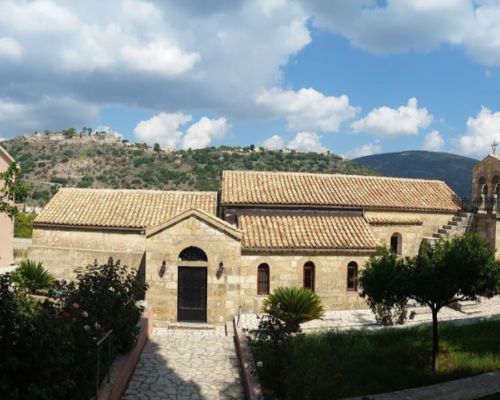
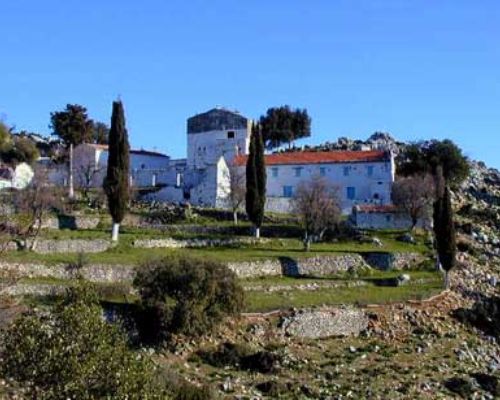
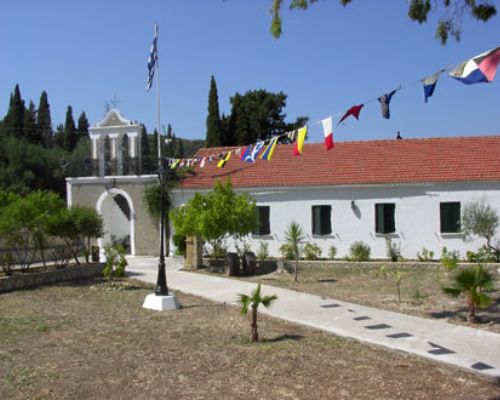
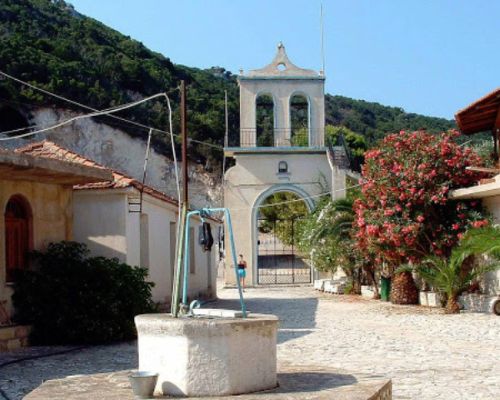
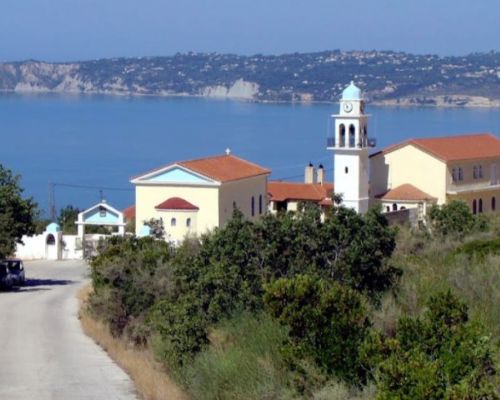
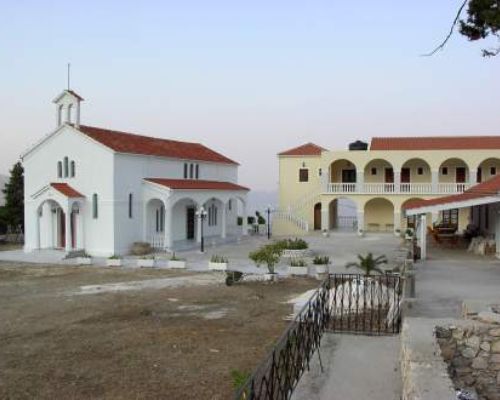
The cloister of the Apostle Andrew was also damaged in the earthquakes and has been lovingly restored with the help over many years of the islanders and nuns themselves. The tremors sent the plaster on the walls of the old church crashing to the ground revealing splendid frescoes of the 13th century concealed underneath. The church has now been converted into an ecclesiastical museum displaying a unique collection of Byzantine icons and garments.
Housed in the monastery’s new church is the right foot of the saint which was transported to Kefalonia by an entering novice, given as a gift from the sacred holy mountain of Athos ‘Ayios Oros’.
The most ancient monastery on Kefalonia island (8th century BC), where the holy Klimis lived. Its medieval tower is very well preserved.
The monastery of Virgin Mery of Sissia is situated at Lourdas Bay. It’s said that it was founded by St Francesco d’Assisi, an opinion based on the name of the monastery, which is an alteration of the wold Assisi. It used to be a very wealthy monastery and many important monks lived there, like the painter Gerasimos Kokkinos or Stroumboulos. Among the other icons that decorate the church was “Virgin Mary” of the famous painter Tsangarola, which is now kept at the museum o St Andrew in Peratata.
A Great site for the travelers as it houses the saint’s relic.
The monastery of Kechrionos is connected to the naval tradition of the island. It was originally built in the 18th century by marines from Zante, today’s church though is dated at 1828. tradition says that 3 local marines were captured in Algeria and the night before Virgin Mary’s celebration fell asleep while they were praying to her for their freedom. When they woke up, the were in Cephalonia so they decided to rebuild the monastery and become monks. The monastery is famous because of the miraculous icon of Virgin Mary that’s there. It celebrates on august 23rd.
Historic female monastery to the south of the castle of St. George. It has an ecclesiastical museum with remarkable post-Byzantine icons, wood carvings and religious relics from all over the island.
Built in 1759 on a cliff overlooking the sea, on the west coast of the peninsula of Paliki (15 km from Lixouri), it offers the most exciting sunset on the island, with the sun sinking in the Ionian Sea.
The monastery of Christ Crucified in Pessada was built in 1618 on the ruins of an older monastery. It was a female monastery but it’s been abandoned for over 20 years, after the death of the last nun.
The masculine monastery of Agrilia was built in the 18th century at the exact place where the miraculous icon of Virgin Mary was found in 1722. At this monastery priested St Cosma the Aetolian when he passed by the island.
The monastery of the Virgin Mary was built in 1690 at the place where a small church dedicated to the Birth of Virgin Mary was. The temple is quite important and it’s the art of the 18th century. It was a male monastery but there are no monks anymore. It celebrates on September 8th and the locals organize a big festival.
The monastery of Themata was founded in the 16th century on the to of a hill and has s magnificent view. It’s called so because of its local governor who was the leader of a “Theme”.It celebrates twice a year, Tuesday after Easter and August 15th.
3 km from Lixouri is the female monastery of Koronato. It was built in the 15th century but the very next century was destroyed. Later it was rebuilt because of a miracle that a shepherd saw with the icon of Virgin Mary crying, which now decorates the church. The monastery is very hospitable and the visitor can admire the gardens, the needleworks of the nuns and also spend the night over at the guesthouse.
Ayios Yerasimos
Set in the lush green valley of Omala with its abundant supply of water and the fields of the ’40 wells’. This abbey is dedicated to Saint Yerasimos Patron Saint of Kefalonia. Yerasimos, a young monk came to Kefalonia in 1560 after living in the Holy Land for twelve years, pursuing a monastic life, prior to becoming a hermit in Zakynthos where he lived for five years. On his arrival in Kefalonia, he ensconced himself in a cave in the Spilia area just above Lassi.
Later he devoted himself to reconstructing this convent and the area around the plateau, built most probably on the ruins of an older one preceding 1264. Yerasimos was also famed as being a miracle worker and water diviner. He passed away on 15th August 1579, on the 20th October 1581 his relics were removed and found to be unaltered. Because many skeptics were still in doubt, the Saint was once more buried and after eight months his body was once again found intact with no decomposition having taken place. In 1622 he was canonized. This cloister is the major center for pilgrims for the faithful who revere his memory, along with most of the islands male population being named after him. People flock to Omala on the festival days for an all-night vigil on the 15th August with services and parades on the 16th and then again on the 20th October. The famous processions involve the saint’s remains were carried from the front of the monastery down the steps and then along the tree-lined avenue that leads to the holy well. This can be found beneath the plane tree in the center of the roundabout. The well is said to have been dug by the saint himself. When the saint’s body is placed on the wall, the water level is reported to rise. On the return journey back along the avenue, the priests passed the sarcophagus containing the saints remains, over the heads of the mentally ill, always one or two would be cured. Even today this is the strong belief of many, and the amount of people seen lying down on the ground awaiting the sarcophagus to be passed over their bodies has increased tenfold all hoping for the saints’ miraculous powers to cure their ailments in some way.
Drogarati Cave
Well signposted and close to the village of Haliotata, these caves are estimated to be about 150 million years old and are remarkable for their unique red and orange stalagmites and stalactites. The cave itself is in two parts, there are 165 steps that proceed to the bottom of a spiraling descent, leading to a downhill entrance passage. The acoustics in the cave are marvelous which led to its development in 1963 with interior lighting and a concert platform that can hold an audience of 500. Its depth is 144 feet below ground with a diameter that ranges from 100 ft to 120 ft. During the war years, the invading forces cut off as souvenirs a large majority of stalagmites.
Sami
To the north and to the east coast of the island is Sami. It is built in the depth of a bay and combines the greenery of nature with the blue of the sea as the trees reach almost ashore. The film “Captain Corelli’s Mandolino” was filmed in the city and in the wider region. Here you will find many shops, rooms to let, restaurants and cafes. You can enjoy the sea on the main beach (Karavomylos) or Antisamos. Do not miss to visit the beautiful Melissani Cave. The further north you to the north you will see the village of Divarata, which is the nearest settlement on the well-known beach of Myrtos, the most popular on the island and one of the most beautiful, not only in Greece but also in the world.
Modern Sami is the main port and an important unpretentious town, rebuilt after the earthquakes of 1953 with mostly 60’s architecture which has recently been revamped along with most of the island’s older architecture that had to be constructed quickly, efficiently and safely for life to realize itself once more. Ferries run to and from its spacious harbor to all major ports including the mainland and Italy as well as neighboring Ithaki.
The area is surrounded by thick woodland with beaches and small coves in abundance close at hand. Sami is situated on the foothills of Ancient Sami, another of the four big cities of antiquity. Referred to by ‘Homer’ as Samos or Same, which could possibly even have been the name of the whole island. In 187 BC the Roman consul Marcus Fulvius Nobili asked the four cities to surrender and each one to hand over twenty principal inhabitants as hostages. The powerful city of Sami was the only one that immediately secured its city gates. Besieged by the Roman forces, it heroically resisted for four months with many being killed or wounded daily. The survivors tired and fatigued, reduced in both efficacy and strength were defeated. The Romans sold the survivors as slaves, and their beloved city was plundered. Some of the remaining ‘Cyclopean walls’ can still be seen among the ruins of ‘Ay. Fanentes’ Monastery’ as well as fragments of the walls destroyed by the Romans on the opposite hill of Paliokastro ‘Old Castle’. In the center of the town’s back streets are traces of a Roman building, a fine mosaic floor has been found and a 3rd-century Roman head, now on display in the Argostoli Archaeological Museum.
Ayia Efimia
This coastal village has an inviting little harbor with quayside tavernas and cafe bars and is popular with the yachting and motor flotillas that are moored along its jetty. This lovely seaside town was once one of the island’s most important centers of trade with beautiful houses, some of which can still be seen today along its bay. It is just one of those wonderful places where you can sit and enjoy the views. The area is encircled with mountains and the Monasteries of Thematon, Panayia Skalopati and Anatoli are close by.
Fiskardo
Traditional village on the northern edge of the island and favorite destination for cruisers. Experience with the seasonal aroma, stroll along the seaside and its alleys between colorful two-story mansions. There are also scenic routes to get here either from Argostoli or Agia Efimia (from narrow streets with panoramic sea views). It is connected by ferry to Lefkada (in Vassiliki) and Ithaca (to Frikes).
Renowned all over the world, Fiskardo is one of the most charming and fashionable places to be and be seen on Kefalonia. Strict conservation laws have preserved this small attractive array of original Venetian style buildings, decorated in pastel shades, spanning the two small bays that lead to the enchanting harbor quayside.
Surrounded by a maze of narrow streets, stone steps, and small alleys, this delightful fishing port is deservedly popular especially with the yachting flotillas and the more opulent vessels of visiting stars and dignitaries including Kings and Princesses. As well as being a picture-postcard village, it is a working fishing port, so retains its authenticity very well indeed, and of course a benefit to those of you who enjoy fresh fish, which is served in the harbor restaurants. Passing the colorful array of small shops, you can stroll around the northern peninsular known as ‘Fournia’ home to a Venetian lighthouse and the ruins of a Christian Basilica Church. The village and surrounding area was originally known as ‘Panormos’, and was invaded during 1085 by the Norman leader and crusader Robert Guiscard. The name ‘Fiskardo’ is thought to have been a corruption of this buccaneers name. This whole area is worth exploring either by foot, rambling along the coastline or through the cypress clad hills to hidden idyllic coves all along the coastal waters. During the summer months, there are daily connections to Ithaki, Lefkada or you could hire a boat and sail slowly at your leisure around this magical region.
Lixouri
Another popular destination is the beautiful Lixouri, the second-largest city in Kefalonia, known for its carnival. It is also known for the Library with its huge collection of books. It has excellent tourist facilities and some of the best taverns on the island, while Xi beach is well known for the clay color of sand due to clay, which is essentially a natural spa, but also the beautiful beaches of Petani, Platia Ammos, Lepida, Atheras, and others.
The island’s second-largest town and the principality of the Paliki Peninsula. Once the site of ‘Ancient Pali’ one of the island’s four-strong ancient strongholds and cities. Lixouri was also transformed to near-total annihilation in the earthquakes of 1953. Much like Sami and Argostoli the town was rebuilt quickly in the style of the 1960 and as economically and as practical as possibly. In the endeavor to bring back the economy and retain a lifestyle which was virtually lost in a matter of seconds. This was done with the generous contributions of local wealthy businessmen. There are numerous sights to see and the town is well worth an exploration especially the churches and impressive buildings such as the museum of Iakavatios. Lots of statues have been erected in honor of eminent personalities that originated from the town and outlying areas. Close by are beaches and the coastline around the bay is a must for beachcombers.
Museum of Natural History
6 km from Argostoli, at Davgata village, is the Museum of Natural History, which was founded in 1996 from the Association for the protection of the nature of Cephalonia and Ithaka, with the collaboration of the local administration and the Cultural union of Davgata. The museum is mainly educative and informative, and it’s also a Center for Environmental Training. The visitor can be informed on the rich flora and fauna of Kefalonia, and its geological particularities as well.
Korialenios Historical and Folklore Museum and Library
At the basement of the Korgialenios Libraries is lodged Historical and Folklore Museum of Argostoli. It was founded in 1962 by Eleni Kembitsi-Kosmetatou and it is one of the most impressive museums of Greece. The objects are exhibited in three units: the folklore material, the representations of urban life and historical evidence that cover three centuries, from the 15th century up to 1848. There are special halls modulated like the period that they represent, like a bedroom, a living room and a representation of lifestyle. The visitor can see portraits, oil paintings, aquarelles, lithographies, temples, utensils, needlework, china, silverware, coins, objects of coppery, documents, maps, designs of churches and fortresses. There is also an important collection of 3000 photos.
This fascinating museum is a must and will be interesting as well as an educational experience for the whole family. Situated below the library, it gives you an insight into life as it was before and after the earthquakes of 1953. The elegance and sophistication of a past era with an excellent assortment of memorabilia, art, photographs and historical manuscripts. Household and cultural possessions as well as a traditional Kefalonian bedchamber from the 19th century, along with Byzantine icons and screens. The library has a remarkable collection of works, old and modern books and manuscripts dating from 1535 to the present in an assortment of languages. Open 9 am to 2 pm closed Sundays and public holidays.
Fiskardo’s Nautical Museum
The Nautical and Environmental Museum at Fiskardo is a non-profit, non-government organization and a result of the collaboration among FNEC and ISRC (Ionian Research Center), which is a scientific department within FNEC, the local authorities, and volunteers. It is housed in the previous elementary school of Fiskardo that was donated to the Museum in April 1999. To repair, renovate and reorganize the Museum worked youths from all over Europe through the European Volunteer Service (EVS), where FNEC is a member. At the Museum is shown a variety of findings.
Harocopio Foundation
Harocopio Foundation was established in 1911, endowed by Panagis Harokopos to be a non-profit foundation for the education and vocational training of indigent and unemployed women. Since then the Harocopio Foundation teaches the art of embroidery to every woman who is interested in this art and wishes to use it professionally.
St. Andrew Convent
The convent houses an ecclesiastical Byzantine museum founded in 1988. It is located in the old church which was the only building preserved from the 1953 earthquake. The art treasures found there date from 1300 to 1900 AD. Some of them are:
– The foot (sole) of St. Andrew
-St. Panagis or priest Basias shirt.
– Two hands wrote letters of St. Kosmas the Aetolian dated in 1777.
– The hieratic scepter and the Communion Cup of his Holiness Nikodemos II’ Metaxas, Archbishop of Cephalonia, an important figure of the 17th century who founded the first Greek printing press in Constantinople.
– The Hieratic vestment is known as “sakkos” embroidered by the Nun Theodora Kanali from Metaxata between 1715 and 1721.
– Wall paintings and icons from the old monastery and others from churches around the island.
The Museum of Natural History of Cephalonia and Ithaca
The relationship of the people with nature, history and the legend compose an interesting ecological identity that will certainly charm and fascinate you. The Museum of Natural History of Cephalonia and Ithaca is located at Davgata, only 5.5 km. away from Argostoli.
Castles
Castle of Assos
A brilliant example of the Venetian fortification, built on the Assos peninsula, is linked to the land by a narrow strip of land. You can hear the hooves of the horses as you climb the uphill road on an autumn day, with the view of the Ionian sea on one side and Assos on the other.
The construction of the Assos fortress began in November 1593 on the basis of plans drawn up by engineers Marino Gentilini, Rafael Rasponi, Pietro Cabuti and ended in 1595.
Assos, after 1684, lost its strategic importance and was neglected by the Venetian administration. During the period of the French domination on the islands (1797-1799), it was the seat of the Town Hall. The castle today is uninhabited, but it is always impressive.
Saint George’s Fortress
On the top of a hill, close to Peratata village, 5 km from Argostoli, hulks St George’s Fortress, which locals simply call “The Castle”. There are references about it back to the 12th century, but today’s form is dated in the 16th century. Its area covers 16000 m2 and the perimeter of the walls is 600 m. Its form is multiangle and consists of three parts: The external walls, the petal formed yard and an exalting pick at the center.
Mistakenly referred to as being a Venetian Castle, the Castle of Saint George was in fact a Byzantine citadel, built over many years chronicled as early as 394 up to 1185. Built and extended because of constant invasions by pirates and other hostile forces, during this period it was the capital and administrative center of the island until the Turks invaded causing notable damage. When the Venetians regained sovereignty they rebuilt much of the Castle in the 16th century especially its walls.
The biggest and most impressive castle of an age long gone, dominates the top of a hill in the now small hamlet of Kastro situated above the villages of Traviata and Peratata with endless panoramic views. There are three prominent battlements the largest faces Peratata, another view Argostoli and the gulf with the third looking eastwards. Inside little survives, however over the past few years renovation works has been carried out including the construction of an amphitheater. There are many underground passages, one which was once used as an escape route and ran for miles down to the Koutavos lagoon, the partially restored ruins of the Catholic Cathedral of Ayios Nicholas and barracks, the ramparts which are some 10 – 15 meters high and beside the parapet which guards the main gate remains a large cannon. Close by in the village of Kastro is the Church of Evangelistria which was once the island’s only Cathedral.
Nature/Flora
Melissani lake
The subareal lake of Melissani was discovered in 1951 by the speleologist Gianni Petrochilo. At the internal has collapsed a major part of the roof revealing a marvelous view. In ancient years the lake was a place of the cult of Panas and the nymph Melissanthi. According to the myth, Melissanthi killed herself in the lake because of her sorrow, because Panas didn’t correspond to her love. In the lake is a small island where the archeologist S. Marinatos discovered the sanctuary of Panas, which findings are at the archeological museum of Argostoli.
On the outskirts of Karavomilos is the beautiful grotto and lake of Melissani. Unimaginable colors greet you in the water as you make your way down a short passage into the cool of this cave. Here you find small rowing boats that will take you into the interior of the cavern and a tiny island. This cave was first explored in 1951 when an ancient lamp was found that is now on display in the
Archaeological Museum at Argostoli along with other finds from a small sanctuary believed to have been here. Part of the roof of the cave has collapsed allowing the sunlight to shine in and display a kaleidoscope of color within.
Xi & Mega Lakos
8km south of Lixouri these two beaches are just a continuation of each other and are ideal for children and the elderly. With warm crystal clear and shallow water and has rich red sand. Xi is backed by large clay rocks called ‘glina’ which crumble, if you make them into a paste with a little water you can rejuvenate your skin with a therapeutic mudpack.
Markopoulo & Arginia
High on the hill top above the resort of Katelios between August 6th and 15th small harmless snakes have been making their appearance for centuries in the church of Panayia of Langouvarda and in the village of Arginia higher up the slopes of Mount Ainos. The original church of Langouvarda was burned in 1945 and completely destroyed in the earthquakes of 1953.
From the night of August 6th ‘telescopus fallax’ known as the cat, the snake appears in and around the church’s courtyard, walls, and bell tower. The inhabitants of the villages consider them to be holy, collecting these harmless creatures and setting them in front of the silver icon of the ‘Virgin of the Snakes’. After the festival on the 15th of August, these honored guests leave until the same time next year. Some say it’s a miracle, whilst others believe the wet damp route that runs from the fresh water spring in Arginia down the ravine to Markopoulo is a migratory path. Locals consider their presence as a good omen for the coming year. During the German occupation in the second world war and the earthquake of 1953, the snakes failed to appear.
Kefalonian Fir
Ainos is the highest mountain on the island. Its highest pick (1628 m) is called Megas Soros. Ainos is planted with a unique species of fir, the “Abies Cephalonica”, or “black fir”, that’s why the older name of the mountain was Monte Nero (black mountain). It grows very quickly, reaches up to 30 m high and lives ip to 500 years. In the 18th century, the forest was very rich, even though the Venetians exploited it for its wood. Today it covers an area of 28620 km2 and it has been declared National Park since 1962.
In Kefalonia, we find foxes, rabbits, partridges, hedgehogs, and numerous other savage animals and birds, which most of them live in Ainos. At the lagoon of Argostoli and the golf of Livadi in Lixouri, we find ducks, cranes, and swans, while at the coasts we find seagulls, halcyons and dolphins.
Wild life
Caretta-Caretta
The rare sea turtle Caretta-Caretta mates in the lagoon of Koutavos and then leaves her eggs at the beaches of the southern part of Cephalonia, especially at Minies, Razakli and Skala. The slow growth rate, combined with the intense development of tourism at the beaches endangers the extension of the species. Therefore citizens have started to be interested in the salvation of this unique species, through information and protection measures.
Monachus-Monachus
The coasts of Cephalonia are full of caves, especially at the northern part of the island, and that’s where the rare species of Mediterranean seal (Monachus-Monachus) cuddles. It is called so because of the bulge that has on the back of its head and reminds of the hoot of a monk.
The Horses of Ainos
There is a distinct bronco of wild horses that live in pods in Ainos. Ancient Greeks used to leave their horses free so that they wouldn’t have to feed them, and that’s how these horses arose. They derive from the bronco f the horses of Pindos but the long survival under difficult circumstances created a brand new, distinct bronco. Their aspect is marvelous, they are small-sized and look like the representations of ancient horses. It’s quite difficult to observe them as there are only a few left since they’re continuously eliminated by incontinent. It’s an urgent necessity for all of us to help, by any means, for their survival and extension.
The Islands Phenomena
Between 65-100 million years ago, a mixture of chalk and limestone formed the body of the island. ‘Karst’ formations were formed these are created by underground waters which have eroded the limestone rock, resulting in passages and cavities on the earth’s surface and a vast underground water network. In some areas, they are fed by underground rivers, consisting mainly of rainwater from the mountains and others formed by seawater. The passage of seawater is the start of one of the geological phenomenon’s of the island known as the ‘ Kefalonian Water Mystery’
KATAVOTHRES
At the tip of the Lassi peninsula, the famous phenomena of Katavothres is situated. 3 km outside of the island’s capital Argostoli in the area of Fanari. At first, it was observed that the water from the sea went into the ground through holes only then to disappear. In the early 20th century, there was a hydroelectric plant and ice factory, which made use of the force of this water. Since then many experts have given their varying theories.
However, it wasn’t until 1959 that speleologist Yiannis Petroeilos and the Austrian geologists Maurin and Zolt began to systematically research the area.
On 26th February 1963, 140 kilos of ‘ouranini’ a water-soluble dye was poured into the fissures at Katavothres. It was discovered that the water underwent a journey through underground rivers and streams, and on 12th March 1963 just 14 days later traces of the ‘ouranini’ appeared in the springs around the village of Karavomilos by the old watermill and lake of the same name, close to Sami. Some 15 km away dye was also found to a lesser degree in the spring of Fridi and Ayia Efimia.
It wasn’t until 1989 that the most recent theory was put forward by a Frenchman named Drogue. He suggests that three things are responsible for the strange movement of water.
1. The existence of the ‘Karst fissures’.
2. The simultaneous effect of the difference in sea levels between the 2 sides of the
island.
3. The difference in density between the saltwater and the semi saltwater.
Today the validity of these findings has been verified by the use of radioisotopes.
Another strange thing is that the stalactites that remain in the caves of the island lean noticeably to one side. This is characteristic in areas where earthquakes are renowned. However, despite the many earthquakes that occur on Kefalonia, no alteration has been observed that has changed the phenomenon of the seawater vanishing into the earth at Katavothres and re-emerging into the sea at Karavomilos.
Kefalonia weather
If you are looking for airline tickets and flights to Kefalonia enter the dates of arrival and departure in the left box, and the online reservation program will show you suggestions and prices for your flight where you can make your reservation directly and securely.

